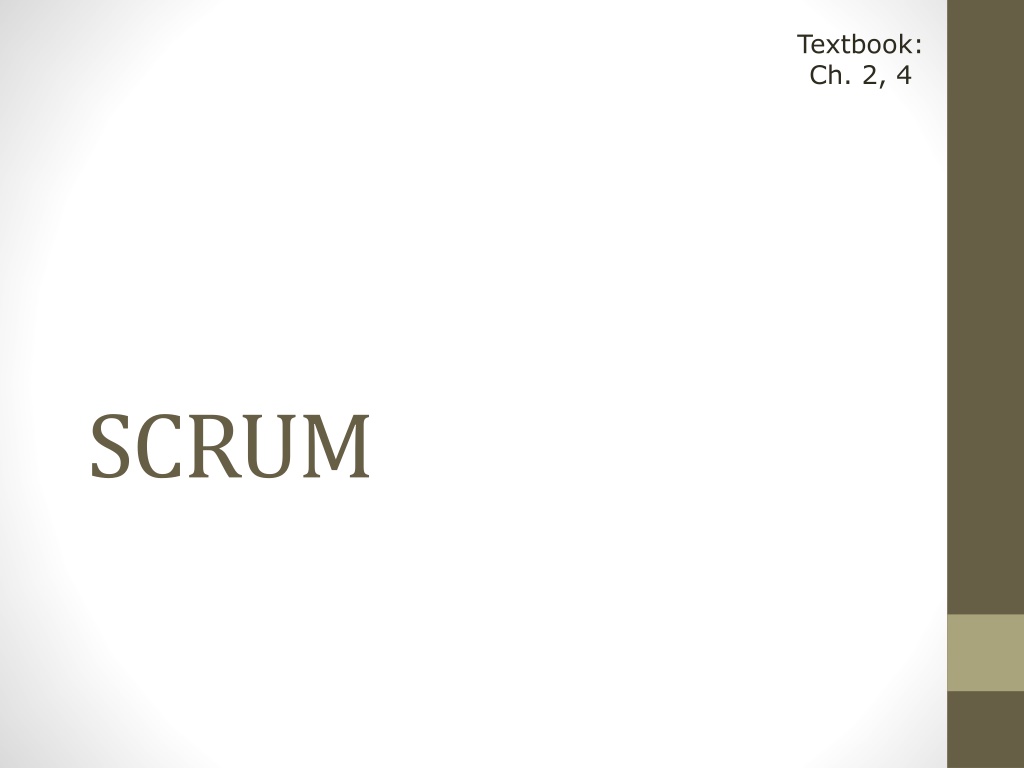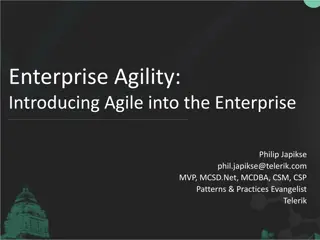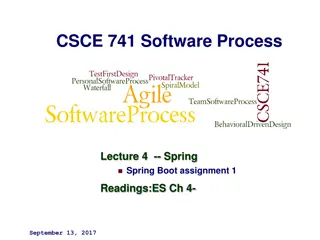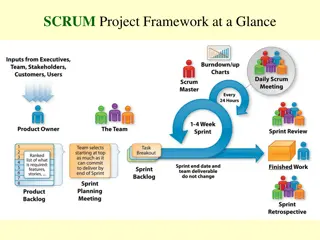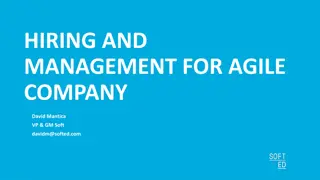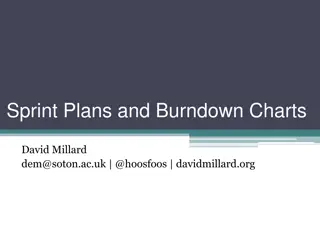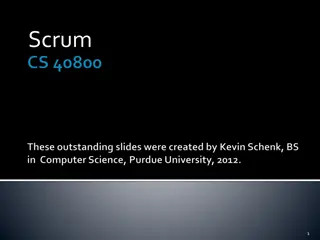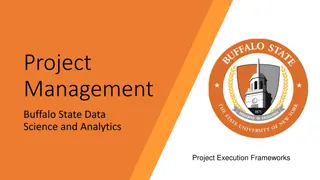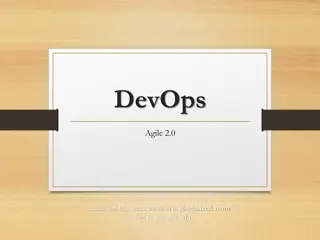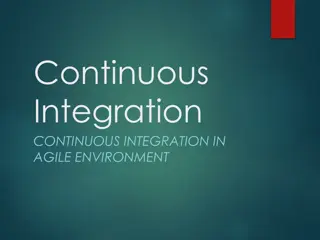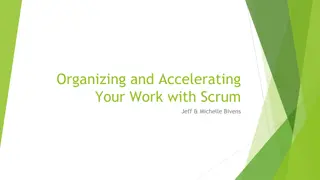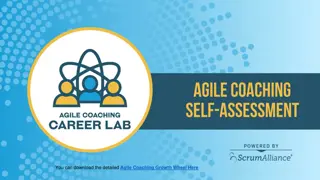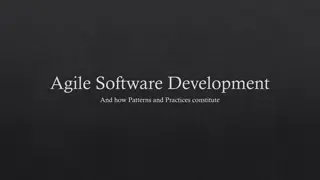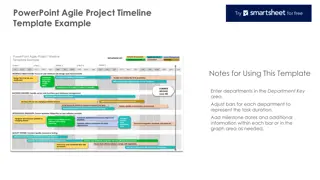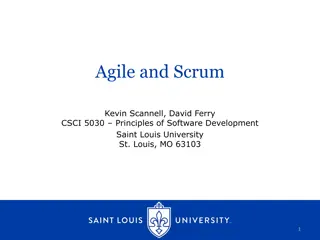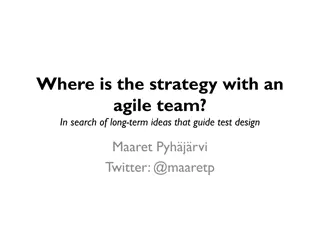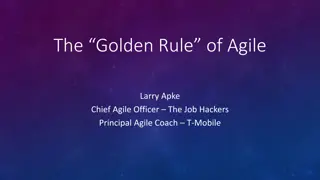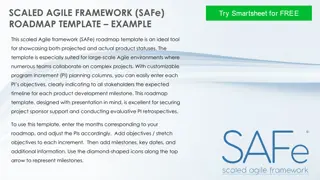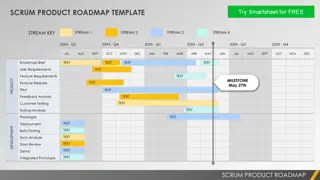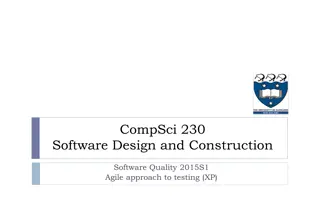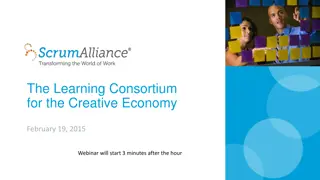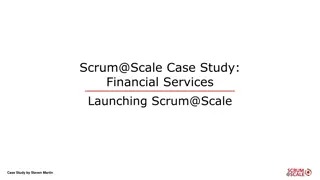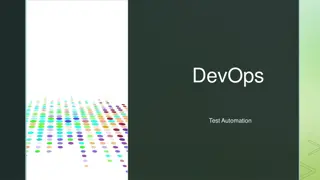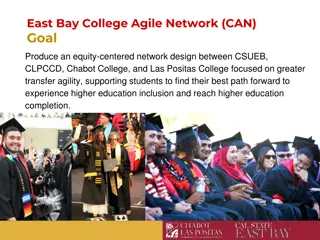Understanding Scrum in Agile Software Development
Scrum is a key agile process used by major companies like Microsoft, Google, and IBM for software development. It involves a team-based approach to managing rapidly changing requirements, improving communication, and maximizing productivity. Scrum has been successfully utilized in various industries including video game development, websites, and mobile phones.
Download Presentation

Please find below an Image/Link to download the presentation.
The content on the website is provided AS IS for your information and personal use only. It may not be sold, licensed, or shared on other websites without obtaining consent from the author. Download presentation by click this link. If you encounter any issues during the download, it is possible that the publisher has removed the file from their server.
E N D
Presentation Transcript
Textbook: Ch. 2, 4 SCRUM
What is Scrum? Definition from rugby football: a scrum is a way to restart the game after an interruption, where the forwards of each side come together in a tight formation and struggle to gain possession of the ball when it is tossed in among them 2
Scrum video http://www.youtube.com/watch?v=D8vT7G0WATM Watch the rest on your own and read your book! 3
Introduction Classical methods of software development have many disadvantages: - huge effort during the planning phase - poor requirements conversion in a rapid changing environment - treatment of staff as a factor of production New methods: Agile Software Development 4
Scrum has been used by: Microsoft Yahoo Google Electronic Arts Lockheed Martin Philips Siemens Nokia IBM Capital One BBC Intuit Nielsen Media First American Real Estate BMC Software Ipswitch John Deere Lexis Nexis Sabre Salesforce.com Time Warner Turner Broadcasting Oce
Scrum has been used for: Video game development FDA-approved, life-critical systems Satellite-control software Websites Handheld software Mobile phones Network switching applications ISV applications Some of the largest applications in use Commercial software In-house development Contract development Fixed-price projects Financial applications ISO 9001-certified applications Embedded systems 24x7 systems with 99.999% uptime requirements the Joint Strike Fighter
Scrum -an agile process SCRUM is an agile, lightweight process for managing and controlling software and product development in rapidly changing environments. Iterative, incremental process Team-based approach developing systems/ products with rapidly changing requirements Controls the chaos of conflicting interest and needs Improve communication and maximize cooperation Protecting the team form disruptions and impediments A way to maximize productivity 7
History of Scrum 1995: analysis of common software development processes not suitable for empirical, unpredictable and non-repeatable processes Design of a new method: Scrum by Jeff Sutherland & Ken Schwaber Enhancement of Scrum by Mike Beedle & combination of Scrum with Extreme Programming 1996: introduction of Scrum at OOPSLA conference 2001: publication Agile Software Development with Scrum by Ken Schwaber & Mike Beedle Successful appliance of Scrum in over 50 companies Founders are members in the Agile Alliance 8
Sequential vs. overlapping development Requirements Design Code Test Rather than doing all of one thing at a time... ...Scrum teams do a little of everything all the time
Scrum framework Roles Product owner ScrumMaster Team Ceremonies Sprint planning Sprint review Sprint retrospective Daily scrum meeting Artifacts Product backlog Sprint backlog Burndown charts
Scrum framework Roles Product owner ScrumMaster Team Ceremonies Sprint planning Sprint review Sprint retrospective Daily scrum meeting Artifacts Product backlog Sprint backlog Burndown charts
Product owner Define the features of the product Decide on release date and content Be responsible for the profitability of the product (ROI) Prioritize features according to market value Adjust features and priority every iteration, as needed Accept or reject work results
The ScrumMaster Represents management to the project Responsible for enacting Scrum values and practices Removes impediments Ensure that the team is fully functional and productive Enable close cooperation across all roles and functions Shield the team from external interferences
The team Typically 5-9 people Cross-functional: Programmers, testers, user experience designers, etc. Members should be full-time May be exceptions (e.g., database administrator) Teams are self-organizing Ideally, no titles but rarely a possibility Membership should change only between sprints
Scrum framework Roles Product owner ScrumMaster Team Ceremonies Sprint review Sprint planning Sprint retrospective Daily scrum meeting Artifacts Product backlog Sprint backlog Burndown charts
Sprint Planning Meeting A collaborative meeting in the beginning of each Sprint between the Product Owner, the Scrum Master and the Team Traditionally takes 8 hours and consists of 2 parts before lunch after lunch 1stPart (before lunch): Creating/updating Product Backlog Determining the Sprint Goal Participants: Product Owner, Scrum Master, Scrum Team 2ndPart (after lunch): Creating/updating Sprint Backlog Participants: Scrum Master, Scrum Team We will be performing this during class/lab time 17
Sprint planning meeting Team capacity Sprint prioritization Sprint goal Analyze and evaluate product backlog Select sprint goal Product backlog Business conditions Sprint planning Decide how to achieve sprint goal (design) Create sprint backlog (tasks) from product backlog items (user stories / features) Estimate sprint backlog in hours Sprint backlog Current product Technology
Sprint planning-2ndpart Team selects items from the product backlog they can commit to completing Sprint backlog is finalized Tasks are identified and each is estimated Each team member develops and estimate and they are compared all at once during the meeting to determine the group estimate Collaboratively, not done alone by the ScrumMaster High-level design is considered Code the middle tier (8) Code the user interface (4) Write test fixtures (4) Code the foo class (6) Update performance tests (4) As a vacation planner, I want to see photos of the hotels.
The daily scrum Parameters Daily 15-minutes Stand-up Not for problem solving Whole world is invited Only team members and ScrumMaster can talk Helps avoid other unnecessary meetings Just the team (including PO, SM, possibly managers
Everyone answers 3 questions 1 What did you do yesterday? 2 What will you do today? 3 Is anything in your way? These are not status for the ScrumMaster They are commitments in front of peers
The sprint review Team presents what it accomplished during the sprint Typically takes the form of a demo of new features or underlying architecture Informal 2-hour prep time rule No slides Whole team participates Invite the world We will do these during class
Sprint retrospective Periodically take a look at what is and is not working Typically ~15 minutes Done after every sprint Whole team participates ScrumMaster Product owner Team Possibly customers and others
Start / Stop / Continue Whole team gathers and discusses what they d like to: Start doing Stop doing This is just one of many ways to do a sprint retrospective. Continue doing
Scrum framework Roles Product owner ScrumMaster Team Ceremonies Sprint planning Sprint review Sprint retrospective Daily scrum meeting Artifacts Product backlog Sprint backlog Burndown charts
Product backlog The requirements A list of all desired work on the project Ideally expressed such that each item has value to the users or customers of the product Prioritized by the product owner Reprioritized at the start of each sprint This is the product backlog
A sample product backlog For a hotel reservation system Backlog item Estimate 3 Allow a guest to make a reservation 5 As a guest, I want to cancel a reservation. 3 As a guest, I want to change the dates of a reservation. 8 As a hotel employee, I can run RevPR reports (revenue-per-room) 8 Improve exception handling ... ... 30 50
The sprint goal A short statement of what the work will be focused on during the sprint Life Sciences Support features necessary for population genetics studies. Database Application Make the application run on SQL Server in addition to Oracle. Financial services Support more technical indicators than company ABC with real-time, streaming data.
Managing the sprint backlog Individuals sign up for work of their own choosing Work is never assigned Estimated work remaining is updated daily Only team member can add, delete or change the sprint backlog (not the product owner) Work for the sprint emerges If work is unclear, define a sprint backlog item with a larger amount of time Break it down later Update work remaining as more becomes known Tasks should not take more than 10 hours
BurndownCharts Are used to represent work done . Are wonderful Information Radiators "Two characteristics are key to a good information radiator. The first is that the information changes over time. This makes it worth a person's while to look at the display... The other characteristic is that it takes very little energy to view the display." 3 Types: Sprint Burndown Chart (progress of the Sprint) Release Burndown Chart (progress of release) Product Burndown chart (progress of the Product) Axes X-Axis: time (usually in days) Y-Axis: remaining effort 30
Sprint Burn down Chart Depicts the total Sprint Backlog hours remaining per day Shows the estimated amount of time to release Ideally should burn down to zero to the end of the Sprint Actually is not a straight line Can bump UP When? 31
A sprint burndown chart Hours
Tasks Mon Tues Wed Thur 4 Fri 8 8 Code the user interface 16 12 10 7 Code the middle tier 16 16 11 8 8 Test the middle tier 12 Write online help 50 40 30 20 10 0 Mon Tue Wed Thu Fri Hours
Release Burn down Chart Will the release be done on right time? X-axis: sprints Y-axis: amount of hours remaining The estimated work remaining can also burn up 34
Scalability Typical individual team is 7 2 people Scalability comes from teams of teams Factors in scaling Type of application Team size Team dispersion Project duration Scrum has been used on multiple 500+ person projects
